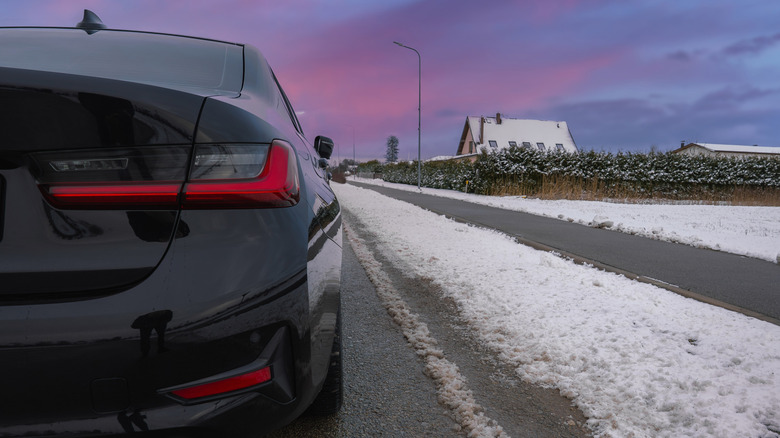Why Do BMWs Chime At 37 Degrees?
Are you a BMW owner wondering why your car is alerting you when it hits 37 degrees Fahrenheit outside? If so, you're not alone. "You know it's winter time when all the BMW owners are asking about their car giving them a random beep," joked r/eneka on the BMW subreddit. Luckily, it's pretty straightforward: BMW cars have an external temperature warning that goes off at 37 degrees Fahrenheit to warn drivers that roads have an increased chance of ice. You'll hear a sound and see the warning on the dashboard. BMW also states that drivers should be careful of bridges and shaded roads, which are areas with increased danger at such low temperatures.
BMW isn't the only automaker to implement this external temperature warning; however, the temperature threshold can vary from brand to brand. For example, the Volkswagen Tiguan's weather warning goes off at 39 degrees Fahrenheit. BMW hasn't outright stated why it chose 37 degrees, but it's likely to keep drivers safe and prepared: after all, being aware of the temperature and weather is one of the biggest tips when it comes to preparing for winter driving.
What is considered a dangerous temperature for driving?
Roads can start getting covered in slippery ice when temperatures hit freezing — below 32 degrees Fahrenheit — and there is moisture in the air. Fog contains a lot of liquid, so it can leave a thick coat of ice on roads that it passes over. Dangerous ice can also form on roads when the temperature is above freezing during the day but then falls below freezing at night. This can melt roadside snow, causing water to flow onto the road, which then freezes at night. Freezing rain also leads to ice, which can supercool when it hits the road's surface and become a clear layer that drivers may not see.
Why does BMW specifically warn drivers about bridges? Since bridges are elevated, there is no heated ground below the road's surface to reduce ice formation. Without this heat, bridges often accumulate more ice in colder temperatures. Similarly, shaded roads get less sun, meaning ice will take longer to melt during the day. This means there's more potential for patches of ice in these areas. It's also important to be prepared for black ice — don't listen to the winter driving myths claiming there's nothing you can do to stay safe in these conditions!

